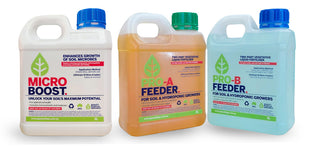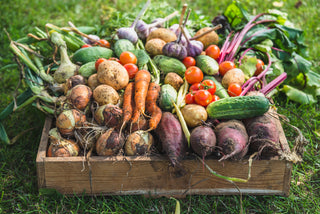Introduction
In the world of urban farming, one can easily fall into the trap of following prescribed rules and recommendations without considering the wisdom of nature itself. One such gospel is the spacing of vegetable seedlings and seeds. Traditional gardening guides and modern commercial farming practices often dictate precise spacing for optimal yield, but is it really necessary to adhere to these recommendations blindly? In this article, we will explore why spacing seedlings and seeds is just a recommendation and should not be treated as gospel.
Nature's Way
In the wild, plants grow in harmony with nature, without human intervention or calculators determining the ideal distance between them. The concept of "spacing" is essentially an artificial imposition on what is fundamentally a natural process. In nature, plants adapt to their surroundings, seeking light, nutrients, and space as they need it. They grow as close or as far apart as circumstances dictate, all without the need for meticulous planning.
Urban farmers should consider emulating this natural approach, understanding that plants have evolved over millions of years to thrive in various conditions. Instead of relying solely on spacing calculators and modern farming practices, they should also trust in the resilience and adaptability of their crops.
Pros of "Suggested Spacing"
-
Predictability: Following recommended spacing guidelines can provide a sense of predictability and control over your garden, making it easier to plan and manage.
-
Airflow and Disease Prevention: Adequate spacing can help promote better airflow between plants, reducing the risk of fungal diseases and other issues.
-
Easier Harvesting: Proper spacing allows for easier access to your crops, making harvesting and maintenance more straightforward.
Cons of "Suggested Spacing"
-
Wasted Space: Strict adherence to spacing recommendations can lead to wasted garden space, limiting your overall yield potential.
-
Resource Overuse: Maintaining larger spaces between plants may require more water, fertilizer, and resources than necessary.
-
Slower Growth: Overly spaced plants might grow more slowly due to competition for resources.
Cramped Planting: A Natural Alternative
Consider a different approach: cramped planting. This technique involves planting your seeds and seedlings closer together than recommended. While it may seem counterintuitive, it can offer numerous benefits:
Pros of Cramped Planting
-
Increased Yield: Cramped planting maximizes your garden's productivity by utilising every inch of available space.
-
Weed Suppression: Dense plantings can crowd out weeds, reducing the need for herbicides and manual weeding.
-
Resource Efficiency: Close plantings can lead to resource-efficient gardening, as plants can share nutrients and shade.
Cons of Cramped Planting
-
Competitive Stress: Plants may compete for resources more intensely, potentially leading to smaller individual yields if not managed properly.
-
Disease Risk: Crowded plants may be more susceptible to certain diseases due to reduced airflow.
-
Thinning Required: Some crops may need thinning if they become overly crowded, which can be labor-intensive.
Conclusion
While spacing recommendations may serve as a useful guideline, they should not be treated as gospel in urban farming. Nature has its way of adapting and thriving in diverse conditions. Embracing the concept of cramped planting, where appropriate, can offer numerous benefits such as increased yield and resource efficiency. So, as you tend to your urban garden, remember that sometimes, Mother Nature's wisdom can outshine the calculators and textbooks.





